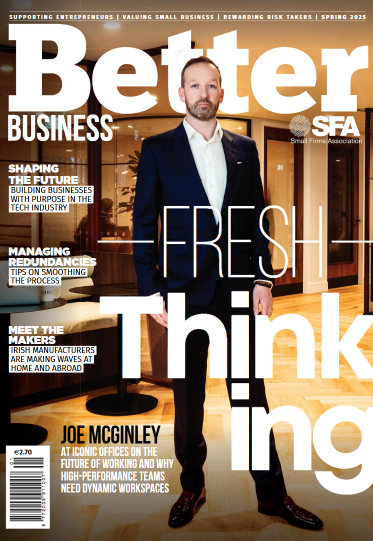Aisling Hurley, Founder and CEO of The Business Fairy, outlines how businesses can maintain their standards as they scale up
Being the founder (and co-founder) of three businesses has taught me a lot over the years. The first lesson I’ve learned is that people are the same the world over and people do business with people, not corporations. A lot of businesses seem to forget that when they scale. I truly believe that ‘please’ and ‘thank you’ are the two most underestimated words in the world of business. Whatever initially drove the founder to start naturally filters down through the business but as you grow and scale, how do you replicate yourself, or ensure standards remain the same from that online interaction to the first telephone call?
- Standardise Communications
Your brand experience is your most valuable asset and you need to make every interaction and customer touchpoint count. You may be amazing in real life but as we approach the dawning of the metaverse with Web 3.0, the expectations from consumers are much higher. With reduced attention spans, your digital content needs to accurately represent the business and help you stand out instantly. Small businesses tend to underestimate the power of investing in a strong online brand identity, with a set of brand guidelines for their staff to refer to. They tend to stop once they have the website built.
Assess the Impact of your Digital Footprint
At TBF, we are frequently called in to troubleshoot and develop strategies for clients. Whether it’s a domestic or international strategy, we always start by analysing the organisation’s current footprint within the geographic location, from onsite optimisation issues to social media touchpoints, inbound and outbound linking and so on. We then analyse the competitors and identify gaps that allow our clients to gain competitive advantage. The online competitive landscape is completely different to the offline marketplace, so it’s worth investing to help you develop an online strategy that works.
Know your Value Proposition
If you compete in a crowded marketplace, you need to be clear about your proposition. It’s worth taking time to use a tool like the Value Proposition Canvas to understand what your customer wants and whether your product or service actually has a match. You may have identified that there’s a gap in the market, but is there a market in the gap? This tool is a great way to help identify and finetune your offering.
Stand for Something
Research shows that consumers are looking for an emotional connection to a brand. They want to engage with businesses that make them feel something. We’re noticing that CSR, Corporate Governance and diversity – at boardroom level, not just on the ground – are becoming key influencers in the purchasing decision.
Manage Customer Expectations
If you have a fantastic business experience offline, make sure this is replicated online. At a basic level, customers expect accuracy and availability. There are many digital tools to help with this. Just by setting up the Facebook chatbot correctly can have a positive effect on your customer’s brand experience. Use reviews and testimonials to highlight positive customer experiences and case studies. This will be an indicator to potential clients as to what they can expect when they buy from you.




